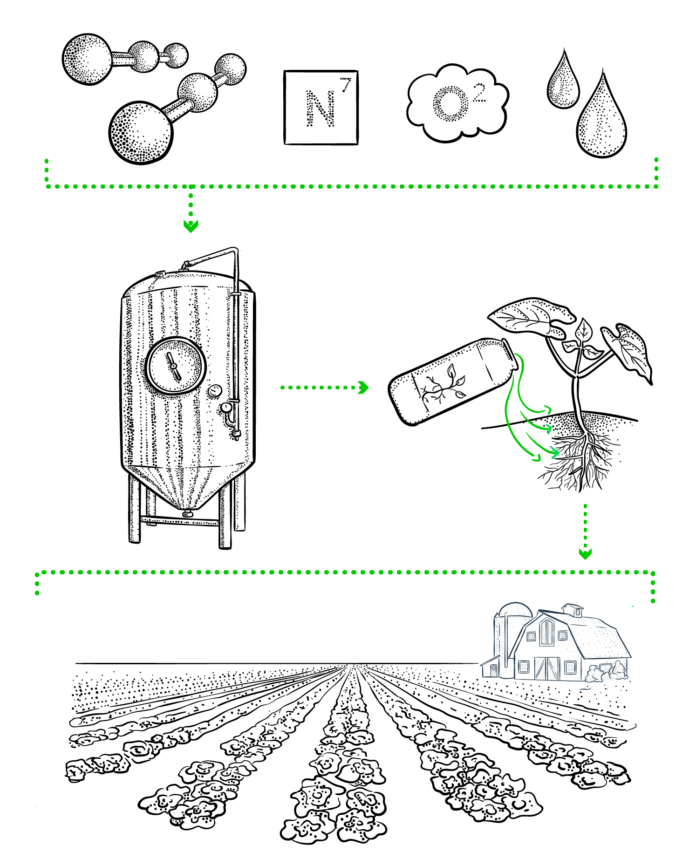At Kiverdi, we are breaking the rules on how things are created. We exist to replace the old extractive systems, and revolutionize them with new forms of sustainable production that are good for business and the planet.
Carbon transformation involves breaking down carbon materials into their fundamental elements and building them back up into a range of bio-based products that are friendlier to our planet.
In recognizing that the existing supply chain model is unfit for the needs of our planet and growing population, we have created a series of commercial solutions that set a new bar in the circular economy by transforming carbon instead of extracting further resources from our planet.
With 50+ patents granted or pending on our NASA-inspired technology, we are addressing key supply chain challenges from price volatility, land and water usage, to overall efficiency all while creating new ways of making products that leverage existing resources and are less extractive and detrimental to our planet.
The inspiration behind Kiverdi began in the 1960’s with NASA on a quest for deep space travel.
The scientists, challenged with how to produce food for a year-long mission with limited space and resources, soon discovered a special class of microbes. These natural single-cell organisms, specifically, called hydrogenotrophs, act like plants in converting carbon dioxide into food.
The concept was simple. Astronauts would exhale CO2, which would be captured by the microbes, then converted, with other inputs such as power and water, into food, which would feed the astronauts. The astronauts would exhale CO2, further enabling the hydrogenotrophs to continue producing an endless cycle of nutrients.
Leveraging NASA’s concepts, we are applying the same thinking to our planet. Not only are we capturing our over abundance of CO2, but we are using it as the key input in creating nutrients and bio-based products.
With 36 billion tons of CO2 emitted around the globe each year, we know our work is just beginning. We have 46+ patents granted or pending of carbon transformation technology that can be applied to a range of industries. We are not just reducing carbon dioxide emissions, but also leading a new era of sustainable production on how we make the food and everyday products to support our growing population.
Kiverdi is currently working on four different commercial solutions focused on harnessing carbon and transforming it into useful solutions. These topics range from protein made from thin air, transforming the recycling of plastics, “Increasing Crop Yield With Organic Nutrients That Shift CO2 From The Air To The Soil,” and redesigning feed for fish.
Source: https://www.kiverdi.com/
Analysis:
Kiverdi is working on projects similar to that of Solein in that carbon is being extracted from the atmosphere and repurposed as forms of energy. However, Kiverdi may be seen as applying this technology to a wider range of products. Specifically, the application of carbon transformation in redesigning feed for animals as well as crop nutrients holds my interest the most. This technology could potentially disrupt current food systems in that, production of food may be made more efficient and environmentally friendly by using carbon instead of other natural resources. By doing so, this will open up the question of what will happen to the rest of the system when this happens? For example, food waste can often be used as animal feed. If carbon transformation is used instead, what will this mean for the existing food waste in our system? While the environmental advantages are there, Is efficiency of production the route that we need to take?




